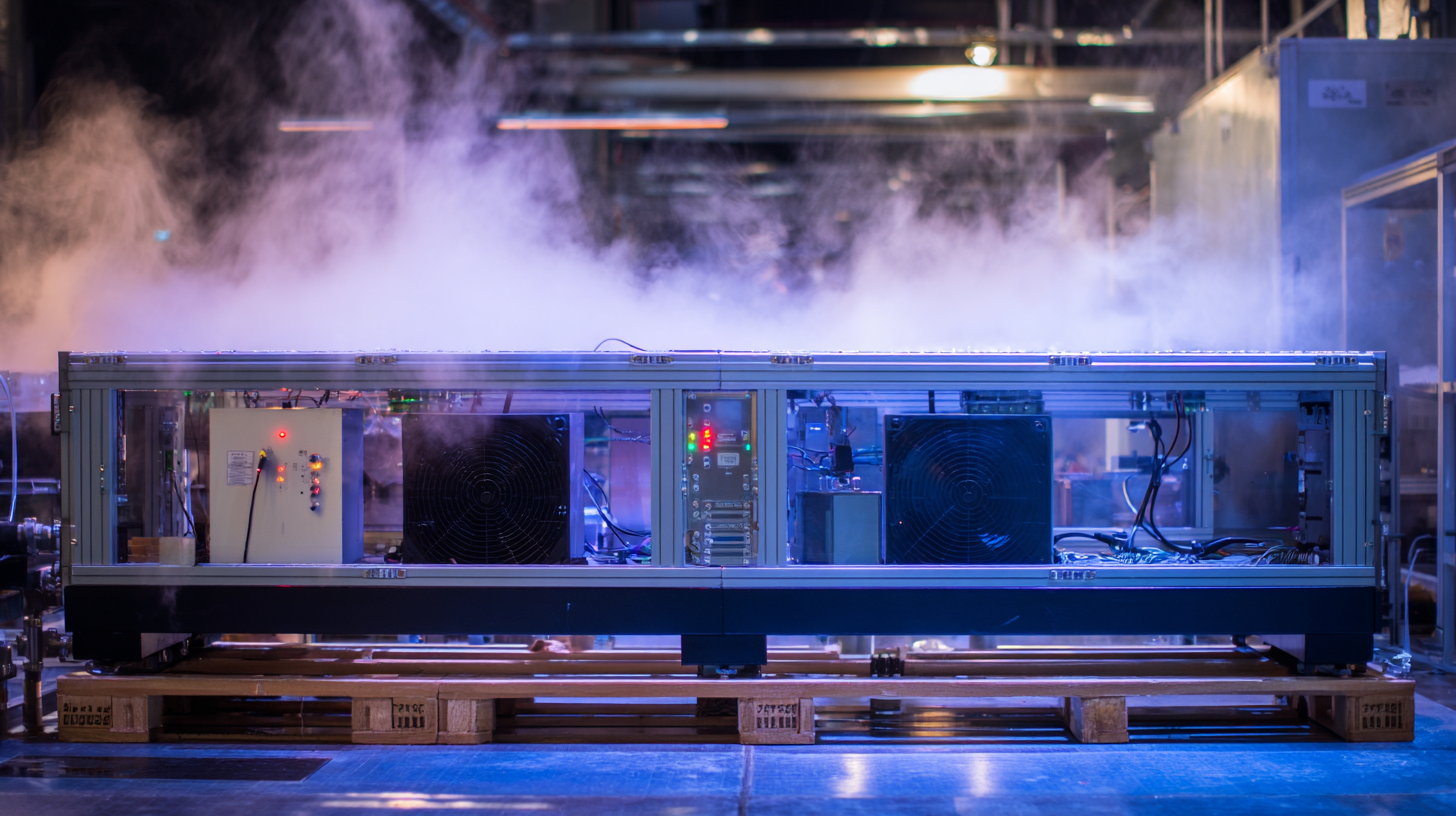 Home
Home 
In the quest for optimal product performance and longevity, understanding moisture management is crucial across various industries, including packaging, textiles, and pharmaceuticals. The ability to measure how well materials resist the transmission of water vapor is indispensable for ensuring quality and compliance with industry standards. According to a recent report from Technavio, the global market for moisture barrier packaging is projected to grow by 5.7% annually, emphasizing the need for robust testing solutions. A key instrument in achieving accurate moisture measurements is the Water Vapor Transmission Tester, which quantifies the permeability of materials to water vapor. By selecting the right tester tailored to specific requirements, businesses can enhance product efficacy, reduce losses, and ultimately meet regulatory expectations. In this blog, we will guide you through the process of choosing the right Water Vapor Transmission Tester for your unique needs.

When selecting a water vapor transmission tester, it's crucial to identify key features that align with your specific application. Different industries may require varying levels of precision and testing environments. For example, the packaging industry typically needs testers that can measure permeation rates accurately in controlled environments to ensure product longevity. According to a recent industry report, the demand for reliable data has grown by over 20% in the past five years, underscoring the importance of selecting the right equipment.

Tip: Always consider the type of materials you will be testing; some devices are better suited for films and foils, while others work well for coatings and laminates. Furthermore, evaluate whether the tester offers both static and dynamic testing methods. This versatility can greatly enhance your testing capabilities, ensuring that the data you receive is both relevant and comprehensive.
In the context of specific applications, it’s important to note the significance of test temperature and humidity control in achieving accurate results. A study showed that fluctuations in these parameters could lead to a variance of up to 30% in measured permeability. Thus, choosing a tester equipped with advanced environmental controls is vital for industries where moisture sensitivity is a critical factor.
When selecting a water vapor transmission tester, understanding the relevant ASTM and ISO standards is crucial for ensuring accuracy and reliability in your testing. ASTM (American Society for Testing and Materials) and ISO (International Organization for Standardization) provide guidelines that help in the standardization and comparison of measuring techniques. Adhering to these standards not only enhances the quality of your testing results but also ensures that your findings are accepted and understood within the global scientific community.
For instance, ISO 15106-1 outlines a method for determining water vapor transmission rates through flexible barrier materials. This standard, among others, emphasizes the importance of precise measurement under controlled conditions to achieve an accuracy of 1% for the measured values, a specification categorized as Class 1 in a testing environment. Understanding these criteria is vital, especially when evaluating the performance of materials used in packaging, construction, and medical devices.
By aligning your testing practices with these recognized standards, you can make informed decisions about the functionality and durability of your materials, ultimately leading to better product performance.
 When selecting a water vapor transmission tester, evaluating material compatibility is paramount, especially when dealing with different substrate types. Substrate materials can significantly affect test outcomes, making it essential to choose a tester that can accommodate a variety of compositions in your experiments. The recent trends in material science highlight the necessity of understanding how different substrates interact with vapor transmission, as seen in studies involving adhesively bonded joints (ABJs). These materials must perform effectively under varying conditions, demanding that the chosen tester can replicate and assess these complexities accurately.
When selecting a water vapor transmission tester, evaluating material compatibility is paramount, especially when dealing with different substrate types. Substrate materials can significantly affect test outcomes, making it essential to choose a tester that can accommodate a variety of compositions in your experiments. The recent trends in material science highlight the necessity of understanding how different substrates interact with vapor transmission, as seen in studies involving adhesively bonded joints (ABJs). These materials must perform effectively under varying conditions, demanding that the chosen tester can replicate and assess these complexities accurately.
Moreover, the development of standardized substrate selection strategies has emerged as key to unbiased evaluation. By establishing uniform criteria for substrate selection, researchers can mitigate variances and focus on the intrinsic properties of the materials under examination. This approach not only enhances the reliability of test results but also aligns with the latest advancements in composite material testing. Thus, when selecting a water vapor transmission tester, it is crucial to consider how well the device can adapt to the specific requirements of your substrates, ensuring comprehensive and precise assessments that reflect the material's true performance characteristics.
When selecting a water vapor transmission tester, understanding the differences between dynamic and static testing methods is crucial. Dynamic testing measures the water vapor transmission rate (WVTR) under controlled airflow conditions, allowing for a more realistic representation of how materials perform in actual applications. According to a report by the ASTM International, dynamic testing can provide a WVTR measurement that is up to 25% more accurate in certain scenarios, particularly for packaging materials subjected to varying environmental conditions.
On the other hand, static testing involves assessing samples in a sealed environment, measuring the permeation of water vapor over time without the influence of air movement. This method is often used for high-barrier materials where the focus is on long-term performance under steady-state conditions. The European Committee for Standardization notes that static testing may underestimate the permeability of materials that perform differently under dynamic conditions, leading to less reliable data for applications requiring high precision.
Ultimately, the choice between dynamic and static testing hinges on the specific needs of your application. If your product experiences diverse environmental factors, dynamic testing may be the preferred method. However, for applications with consistent, controlled environments, static testing could suffice, making it essential to align testing methods with your material's intended use.
| Test Method | Accuracy | Speed | Cost | Ideal Use Case |
|---|---|---|---|---|
| Dynamic Testing | High | Fast | Moderate | Research & Development |
| Static Testing | Moderate | Slow | Lower | Quality Control |
| Cup Method | Low | Very Slow | Low | Academic Studies |
| Desiccant Method | Moderate | Moderate | Moderate | Material Testing |
When it comes to selecting a water vapor transmission tester, balancing cost and performance is crucial. According to a recent market analysis by Research and Markets, the global market for moisture barrier testing systems is projected to grow significantly, with advanced technologies delivering enhanced accuracy and efficiency. As companies increasingly prioritize quality control, investing in a reliable water vapor transmission tester can lead to substantial long-term savings by preventing product defects and ensuring compliance with industry standards.
Tip: Always consider the testing methods you will primarily use, as different testers excel in varying environments. For instance, if you require high-throughput testing, choose a tester that offers automation features, even if it comes at a higher upfront cost. This can pay off by boosting your operational efficiency.
Additionally, be mindful of calibration costs when evaluating different testers. The ASTM E96 standard outlines the importance of maintaining precise measurements, which means that ongoing calibration can add to your total expenses. Opting for a tester with lower maintenance needs and readily available support can help strike a better cost-performance ratio.
Tip: Check for user reviews and case studies to understand how specific models perform in real-world scenarios. Leveraging others' experiences can help you make a more informed decision.
This chart compares the performance metrics of different water vapor transmission testers based on their cost and performance balance. The data illustrates the relative efficiency and pricing of each tester, helping you make an informed decision.











